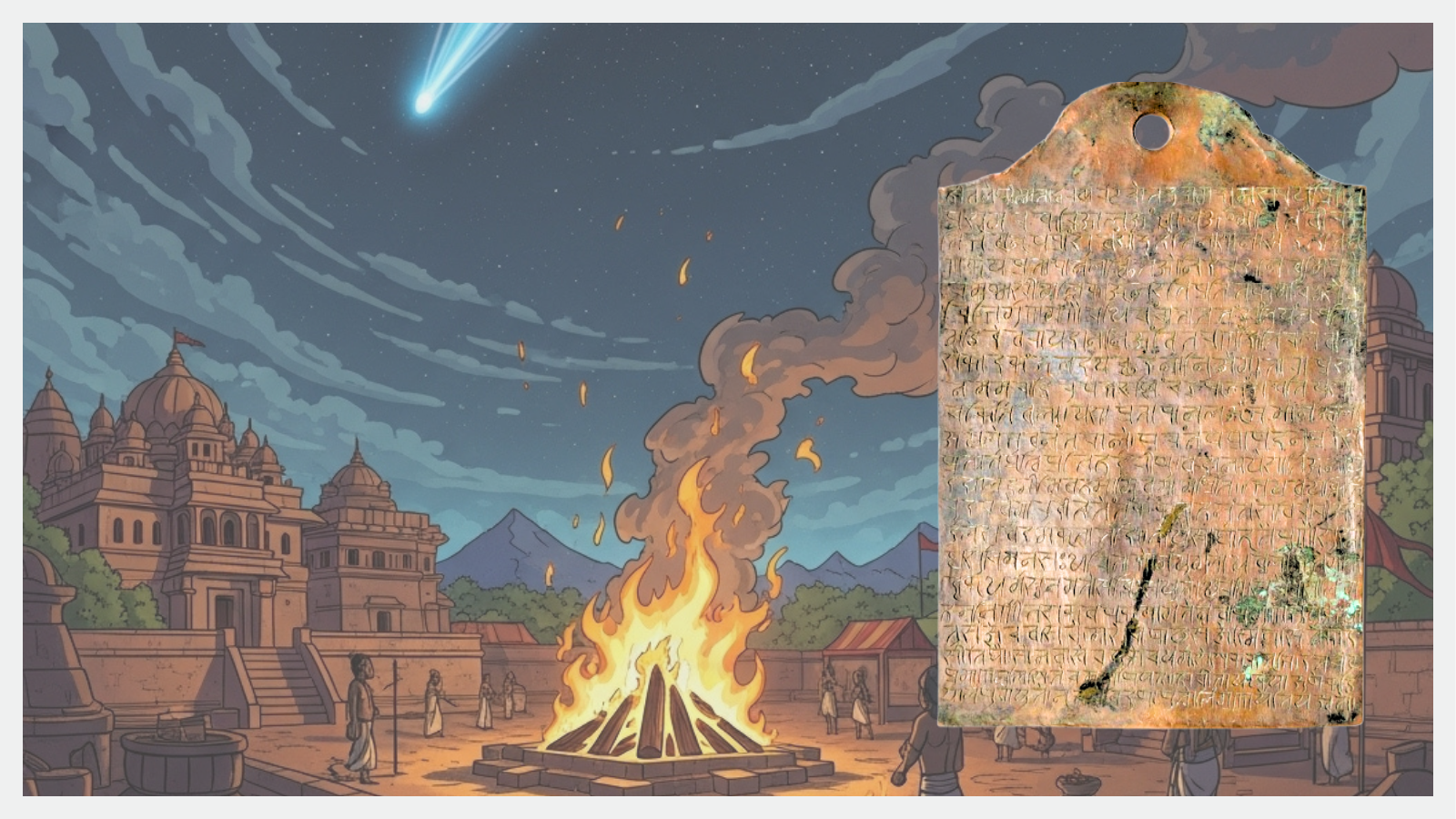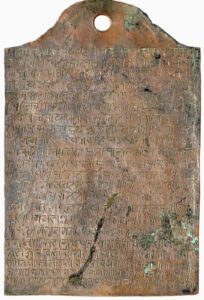Halley’s Comet, famed for its bright tail and 72–80 year orbit, was once feared as an omen. The inscription reveals both ancient astronomical knowledge and the cultural dread comets inspired
Published Jun 22, 2025 | 12:53 PM ⚊ Updated Jun 25, 2025 | 6:39 PM

Earliest epigraphical reference to Halley's Comet in India
Synopsis: A remarkable 15th-century copper plate inscription unearthed last week in Srisailam, Andhra Pradesh, has revealed what experts say is the first recorded reference to Halley’s Comet in Indian epigraphy. Part of a cache of inscriptions spanning centuries, the plate sheds light on ancient India’s astronomical awareness and cultural interpretations of celestial events, particularly comets — often regarded as ominous signs.
A rare celestial reference etched in copper has surfaced from the temple town of Srisailam in Andhra Pradesh, adding a dazzling new chapter to India’s epigraphical heritage. Discovered just last week among a trove of historical inscriptions spanning multiple eras, this 15th-century copper plate is the first known Indian inscription to mention Halley’s Comet.
Known for its bright tail and predictable return every 72–80 years, Halley’s Comet is the only short-period comet visible to the naked eye, often feared as a harbinger of doom in ancient times. The find offers not only a glimpse into the astronomical awareness of the time but also the cultural anxiety such events once stirred.
Dated to 1456 CE (Śaka 1378, Āshāḍha ba.11, Monday) during the reign of Vijayanagara king Mallikārjuna, the inscription is written in Sanskrit and Nāgari script. It records a royal grant made to Liṁgaṇārya, a Vedic scholar from Kaḍiyalapura (present-day Kadapa district), in response to the ominous appearance of a comet and the accompanying meteor shower.
“Interestingly, there is corroborative literature in Egypt and China referring to a similar kind of phenomenon. Additionally, there was a reference to the same comet in Kashmir as well, where a Sanskrit scholar took it as a premonition for the downfall of the Sultans,” Director of Epigraphy, ASI, K Munirathnam, explained to South First. “Furthermore, I have also confirmed with a few sources at NASA regarding the timeline. While they do agree that the timeline is in sync with Halley’s Comet cycles, they said that they don’t have any conclusive evidence,” he continued.

Copper Plate referring to Halley’s Comet found in Srisailam
The copper plate describes the event as “Dhūmakētu mahōtpāta” (great calamity caused by a comet) and “Prakāśyāya mahōtpāta śāntyartham” (to pacify the calamities from the blazing comet). On his asterism day, it notes that the king donated the village of Siṁgāpura as an agrahāra, a traditional gift to learned Brahmins, to ward off the comet’s ill effects.
“The Copper inscription reveals the kind of furore the Comet’s sighting caused in India. The kings and scholars were panicked, viewing it as an ill omen. As is the case with King Mallikarjuna, he ordered several rites and Homas to take place in the kingdom to prevent any negative effects on his kingdom,” Munirathnam said. He held this inscription to be significant not just for its astronomical value but also for its rare cultural insight, referring to it as a “bombshell of a discovery.”
It echoes a global sentiment from 1456, when the appearance of Halley’s Comet evoked dread from Europe to Asia. It underscores how celestial phenomena were woven into the fabric of ritual, belief, and governance in medieval India.
(Edited by Ananya Rao)
